Research
* indicates equal contribution. The dates mentioned here indicate when the preprint arrived.
2024
-
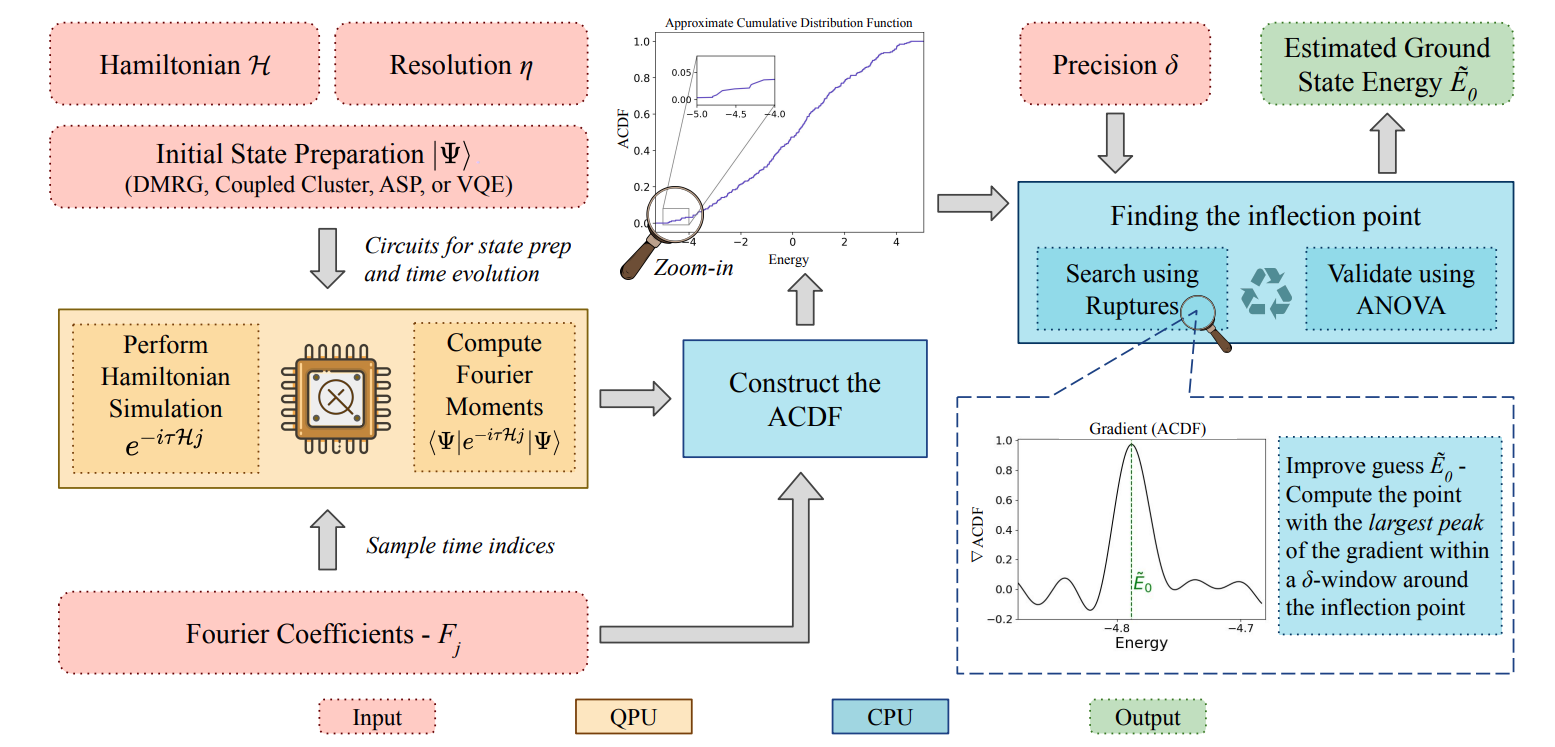 Early Fault-Tolerant Quantum Algorithms in Practice: Application to Ground-State Energy EstimationOriel Kiss , Utkarsh Azad , Borja Requena , Alessandro Roggero , David Wakeham , and Juan Miguel ArrazolaMay 2024
Early Fault-Tolerant Quantum Algorithms in Practice: Application to Ground-State Energy EstimationOriel Kiss , Utkarsh Azad , Borja Requena , Alessandro Roggero , David Wakeham , and Juan Miguel ArrazolaMay 2024We explore the practicality of early fault-tolerant quantum algorithms, focusing on ground-state energy estimation problems. Specifically, we address the computation of the cumulative distribution function (CDF) of the spectral measure of the Hamiltonian and the identification of its discontinuities. Scaling to bigger system sizes unveils three challenges: the smoothness of the CDF for large supports, the absence of tight lower bounds on the overlap with the actual ground state, and the complexity of preparing high-quality initial states. To tackle these challenges, we introduce a signal processing technique for identifying the inflection point of the CDF. We argue that this change of paradigm significantly simplifies the problem, making it more accessible while still being accurate. Hence, instead of trying to find the exact ground-state energy, we advocate improving on the classical estimate by aiming at the low-energy support of the initial state. Furthermore, we offer quantitative resource estimates for the maximum number of samples required to identify an increase in the CDF of a given size. Finally, we conduct numerical experiments on a 26-qubit fully-connected Heisenberg model using a truncated density-matrix renormalization group (DMRG) initial state of low bond dimension. Results show that the prediction obtained with the quantum algorithm aligns well with the DMRG-converged energy at large bond dimensions and requires several orders of magnitude fewer samples than predicted by the theory. Hence, we argue that CDF-based quantum algorithms are a viable, practical alternative to quantum phase estimation in resource-limited scenarios.
@article{2024arXiv240503754K, author = {{Kiss}, Oriel and {Azad}, Utkarsh and {Requena}, Borja and {Roggero}, Alessandro and {Wakeham}, David and {Arrazola}, Juan Miguel}, title = {{Early Fault-Tolerant Quantum Algorithms in Practice: Application to Ground-State Energy Estimation}}, keywords = {Quantum Physics}, year = {2024}, month = may, doi = {10.48550/arXiv.2405.03754}, url = {https://arxiv.org/abs/2405.03754}, bibtex_show = true, }
2023
-
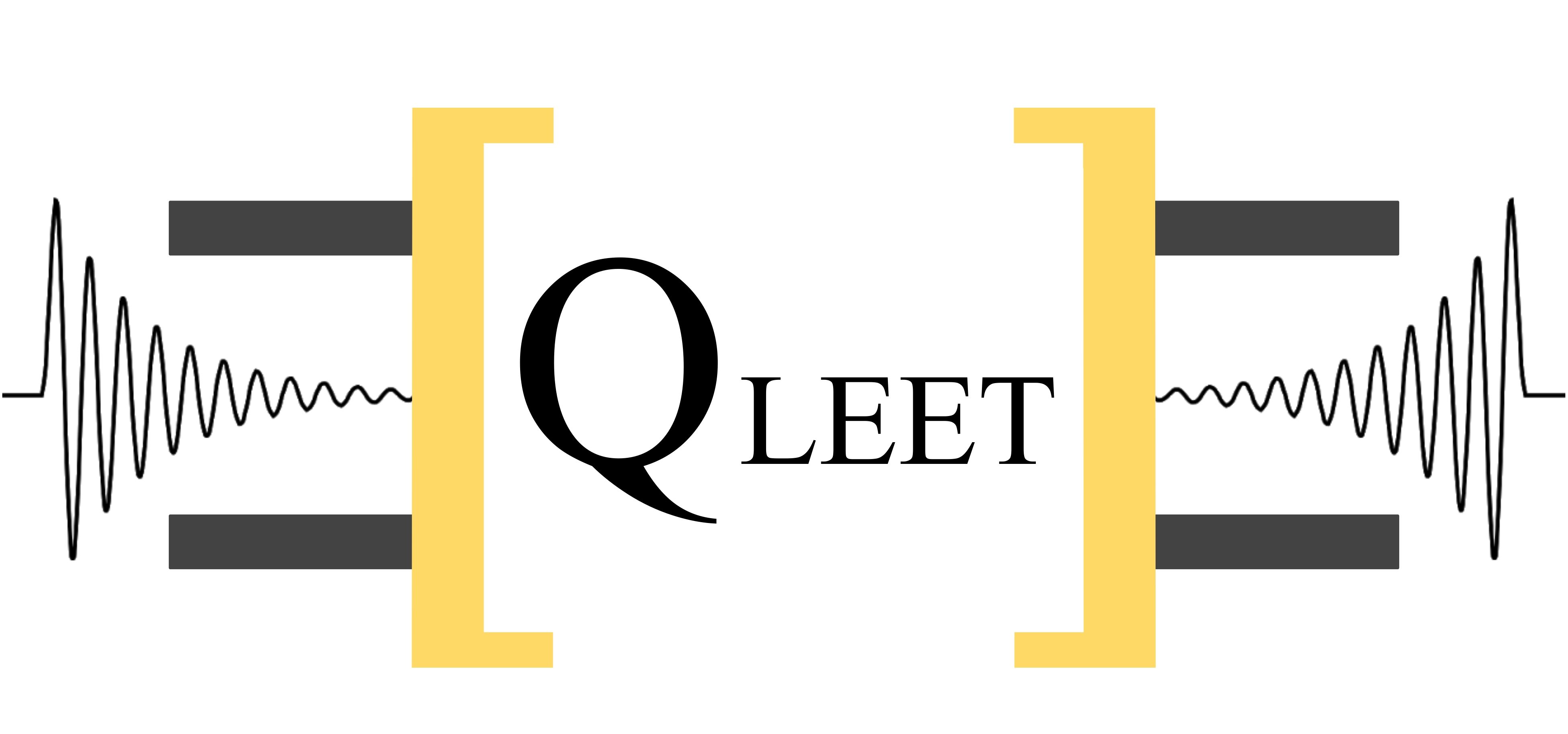 qLEET: Visualizing Loss Landscapes, Expressibility, Entangling Power and Training Trajectories for Parameterized Quantum CircuitsUtkarsh Azad* , and Animesh Sinha*Quantum Information Processing, Jun 2023
qLEET: Visualizing Loss Landscapes, Expressibility, Entangling Power and Training Trajectories for Parameterized Quantum CircuitsUtkarsh Azad* , and Animesh Sinha*Quantum Information Processing, Jun 2023We present qLEET, an open-source Python package for studying parameterized quantum circuits (PQCs), which are widely used in various variational quantum algorithms (VQAs) and quantum machine learning (QML) algorithms. qLEET enables computation of properties such as expressibility and entangling power of a PQC by studying its entanglement spectrum and the distribution of parameterized states produced by it. Furthermore, it allows users to visualize the training trajectories of PQCs along with high-dimensional loss landscapes generated by them for different objective functions. It supports quantum circuits and noise models built using popular quantum computing libraries such as Qiskit, Cirq, and Pyquil. In our work, we demonstrate how qLEET provides opportunities to design and improve hybrid quantum-classical algorithms by utilizing intuitive insights from the ansatz capability and structure of the loss landscape.
@article{UtkarshQleet2022, title = {qLEET: Visualizing Loss Landscapes, Expressibility, Entangling Power and Training Trajectories for Parameterized Quantum Circuits}, author = {Azad*, Utkarsh and Sinha*, Animesh}, bibtex_show = true, copyright = {Creative Commons Attribution Non Commercial No Derivatives 4.0 International}, keywords = {Quantum Physics (quant-ph), FOS: Physical sciences, FOS: Physical sciences}, volume = {22}, issn = {1573-1332}, url = {http://dx.doi.org/10.1007/s11128-023-03998-z}, doi = {10.1007/s11128-023-03998-z}, number = {6}, journal = {Quantum Information Processing}, publisher = {Springer Science and Business Media LLC}, year = {2023}, month = jun }
2022
-
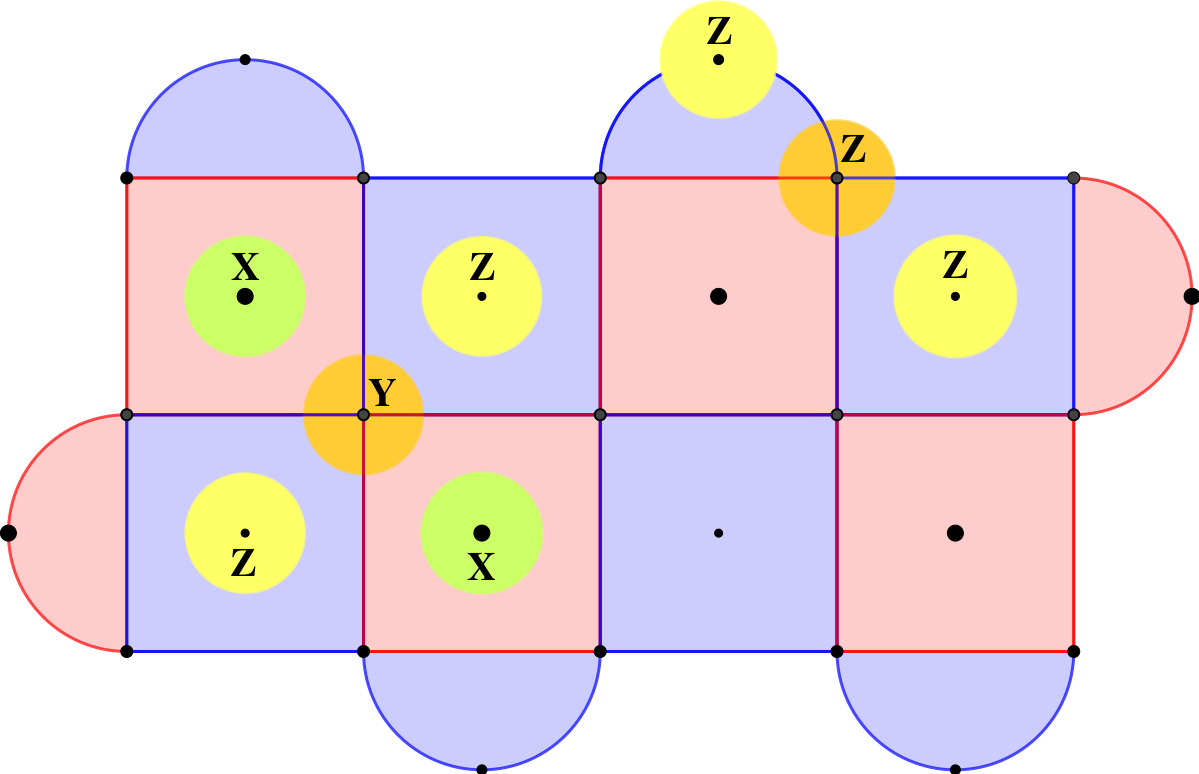 Surface code design for asymmetric error channelsUtkarsh Azad , Aleksandra Lipińska , Shilpa Mahato , Rijul Sachdeva , Debasmita Bhoumik , and Ritajit MajumdarIET Quantum Communication, May 2022
Surface code design for asymmetric error channelsUtkarsh Azad , Aleksandra Lipińska , Shilpa Mahato , Rijul Sachdeva , Debasmita Bhoumik , and Ritajit MajumdarIET Quantum Communication, May 2022Surface codes are quantum error correcting codes normally defined on 2D arrays of qubits. In this paper, we introduce a surface code design based on the fact that the severity of bit flip and phase flip errors in the physical quantum systems is asymmetric. For our proposed surface code design for asymmetric error channels, we present pseudo-threshold and threshold values in the presence of various degrees of asymmetry of Pauli X, Y, and Z errors in a depolarization channel. We show that, compared to symmetric surface codes, our asymmetric surface codes can provide almost double the pseudo-threshold rates while requiring less than half the number of physical qubits in the presence of increasing asymmetry in the error channel. We also demonstrate that as the asymmetry of the surface code increases, the advantage in the pseudo-threshold rates begins to saturate for any degree of asymmetry in the channel.
@article{SCDAECAzad2022, title = {Surface code design for asymmetric error channels}, author = {Azad, Utkarsh and Lipi{\'{n}}ska, Aleksandra and Mahato, Shilpa and Sachdeva, Rijul and Bhoumik, Debasmita and Majumdar, Ritajit}, year = {2022}, month = may, bibtex_show = true, journal = {{IET} Quantum Communication}, publisher = {Institution of Engineering and Technology ({IET})}, doi = {10.1049/qtc2.12042}, } -
 Quantum phase recognition using quantum tensor networksShweta Sahoo* , Utkarsh Azad* , and Harjinder SinghThe European Physical Journal Plus, Dec 2022
Quantum phase recognition using quantum tensor networksShweta Sahoo* , Utkarsh Azad* , and Harjinder SinghThe European Physical Journal Plus, Dec 2022Machine learning (ML) has recently facilitated many advances in solving problems related to many-body physical systems. Given the intrinsic quantum nature of these problems, it is natural to speculate that quantum-enhanced machine learning will enable us to unveil even greater details than we currently have. With this motivation, this paper examines a quantum machine learning approach based on shallow variational ansatz inspired by tensor networks for supervised learning tasks. In particular, we first look at the standard image classification tasks using the Fashion-MNIST dataset and study the effect of repeating tensor network layers on ansatz’s expressibility and performance. Finally, we use this strategy to tackle the problem of quantum phase recognition for the transverse-field Ising and Heisenberg spin models in one and two dimensions, where we were able to reach ≥98% test-set accuracies with both multi-scale entanglement renormalization ansatz (MERA) and tree tensor network (TTN) inspired parametrized quantum circuits.
@article{Sahoo2022, title = {Quantum phase recognition using quantum tensor networks}, author = {Sahoo*, Shweta and Azad*, Utkarsh and Singh, Harjinder}, year = {2022}, month = dec, journal = {The European Physical Journal Plus}, publisher = {Springer Science and Business Media {LLC}}, volume = {137}, number = {12}, bibtex_show = true, doi = {10.1140/epjp/s13360-022-03587-6}, } -
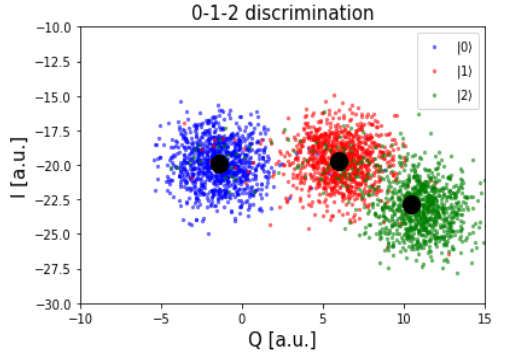 Machine Learning based Discrimination for Excited State Promoted ReadoutUtkarsh Azad , and Helena Zhang2022 IEEE/ACM 7th Symposium on Edge Computing (SEC), Nov 2022
Machine Learning based Discrimination for Excited State Promoted ReadoutUtkarsh Azad , and Helena Zhang2022 IEEE/ACM 7th Symposium on Edge Computing (SEC), Nov 2022A limiting factor for readout fidelity for superconducting qubits is the relaxation of the qubit to the ground state before the time needed for the resonator to reach its final target state. A technique known as excited state promoted (ESP) readout was proposed to reduce this effect and further improve the readout contrast on superconducting hardware. In this work, we use readout data from IBM’s five-qubit quantum systems to measure the effectiveness of using deep neural networks, like feedforward neural networks, and various classification algorithms, like k-nearest neighbors, decision trees, and Gaussian naive Bayes, for single-qubit and multi-qubit discrimination. These methods were compared to standardly used linear and quadratic discriminant analysis algorithms based on their qubit-state-assignment fidelity performance, robustness to readout crosstalk, and training time.
@article{UtkarshZhang2022, title = {Machine Learning based Discrimination for Excited State Promoted Readout}, author = {Azad, Utkarsh and Zhang, Helena}, year = {2022}, month = nov, journal = {2022 IEEE/ACM 7th Symposium on Edge Computing (SEC)}, publisher = {arXiv}, doi = {10.1109/SEC54971.2022.00053}, bibtex_show = true, copyright = {Creative Commons Attribution Non Commercial No Derivatives 4.0 International}, keywords = {Quantum Physics (quant-ph), Machine Learning (cs.LG), FOS: Physical sciences, FOS: Physical sciences, FOS: Computer and information sciences, FOS: Computer and information sciences} }
2021
-
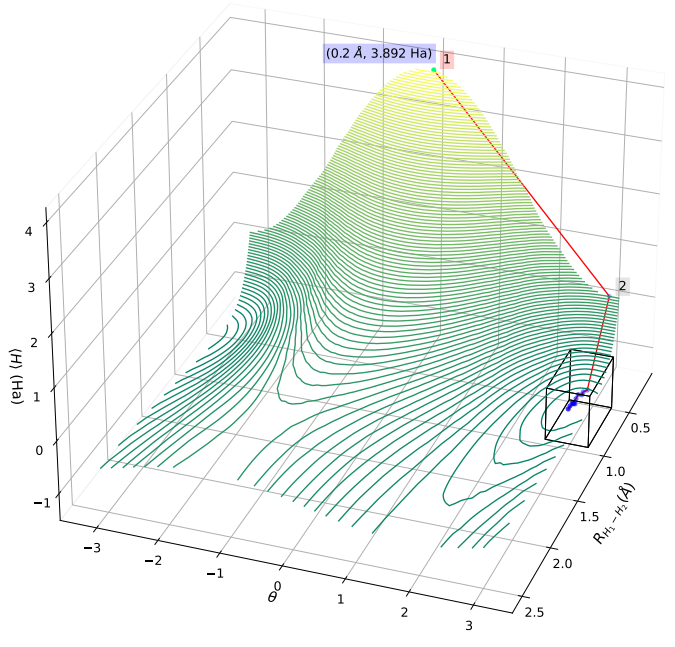 Quantum chemistry calculations using energy derivatives on quantum computersUtkarsh Azad , and Harjinder SinghChemical Physics, Jun 2021
Quantum chemistry calculations using energy derivatives on quantum computersUtkarsh Azad , and Harjinder SinghChemical Physics, Jun 2021Quantum chemistry calculations such as the prediction of molecular properties and modeling of chemical reactions are a few of the critical areas where near-term quantum computers can showcase quantum advantage. We present a method to calculate energy derivatives for both ground state and excited state energies with respect to the parameters of a chemical system based on the framework of the variational quantum eigensolver (VQE). A low-depth implementation of quantum circuits within the hybrid variational paradigm is designed, and their computational costs are analyzed. We showcase the effectiveness of our method by incorporating it in some key quantum chemistry applications of energy derivatives, such as to perform minimum energy configuration search and estimate molecular response properties estimation of H2 molecule, and also to find the transition state of H2 + H ↔ H + H2 reaction. The obtained results are shown to be in complete agreement with their respective full configuration interaction (FCI) values.
@article{UtkarshEDerivatives2022, title = {Quantum chemistry calculations using energy derivatives on quantum computers}, author = {Azad, Utkarsh and Singh, Harjinder}, year = {2021}, month = jun, journal = {Chemical Physics}, publisher = {Elsevier {BV}}, volume = {558}, pages = {111506}, bibtex_show = true, doi = {10.1016/j.chemphys.2022.111506}, } -
 Qubit Routing Using Graph Neural Network Aided Monte Carlo Tree SearchAnimesh Sinha* , Utkarsh Azad* , and Harjinder SinghProceedings of the AAAI Conference on Artificial Intelligence, Apr 2021
Qubit Routing Using Graph Neural Network Aided Monte Carlo Tree SearchAnimesh Sinha* , Utkarsh Azad* , and Harjinder SinghProceedings of the AAAI Conference on Artificial Intelligence, Apr 2021Near-term quantum hardware can support two-qubit operations only on the qubits that can interact with each other. Therefore, to execute an arbitrary quantum circuit on the hardware, compilers have to first perform the task of qubit routing, i.e., to transform the quantum circuit either by inserting additional SWAP gates or by reversing existing CNOT gates to satisfy the connectivity constraints of the target topology. We propose a procedure for qubit routing that is architecture agnostic and that outperforms other available routing implementations on various circuit benchmarks. The depth of the transformed quantum circuits is minimised by utilizing the Monte Carlo tree search to perform qubit routing, aided by a Graph neural network that evaluates the value function and action probabilities for each state.
@article{UtkarshQRouting2022, title = {Qubit Routing Using Graph Neural Network Aided Monte Carlo Tree Search}, author = {Sinha*, Animesh and Azad*, Utkarsh and Singh, Harjinder}, year = {2021}, month = apr, journal = {Proceedings of the {AAAI} Conference on Artificial Intelligence}, publisher = {Association for the Advancement of Artificial Intelligence ({AAAI})}, volume = {36}, number = {9}, bibtex_show = true, pages = {9935--9943}, doi = {10.1609/aaai.v36i9.21231}, } -
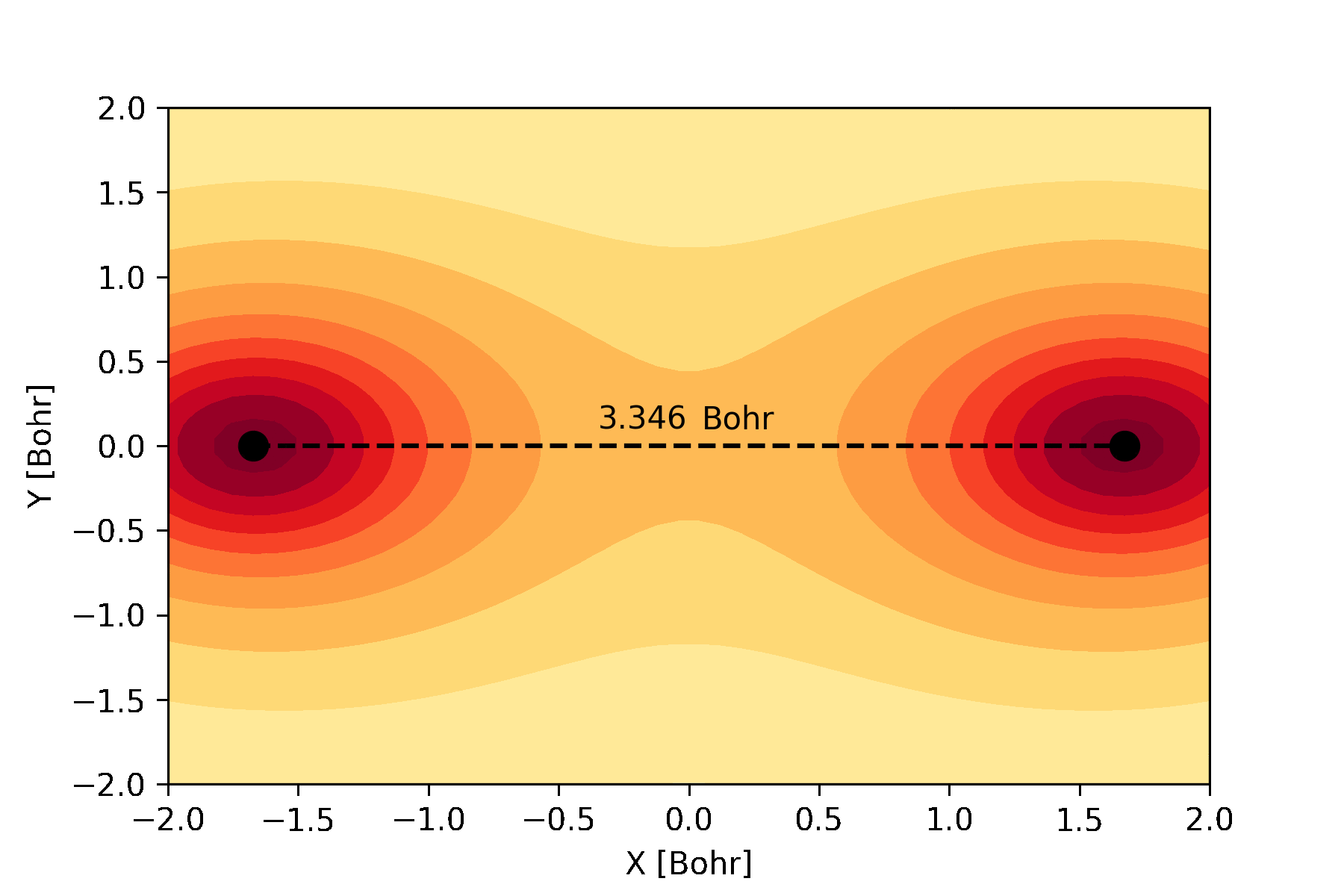 Differentiable quantum computational chemistry with PennyLaneJuan Miguel Arrazola , Soran Jahangiri , Alain Delgado , Jack Ceroni , Josh Izaac , Utkarsh Azad , and 12 more authorsApr 2021
Differentiable quantum computational chemistry with PennyLaneJuan Miguel Arrazola , Soran Jahangiri , Alain Delgado , Jack Ceroni , Josh Izaac , Utkarsh Azad , and 12 more authorsApr 2021This work describes the theoretical foundation for all quantum chemistry functionality in PennyLane, a quantum computing software library specializing in quantum differentiable programming. We provide an overview of fundamental concepts in quantum chemistry, including the basic principles of the Hartree-Fock method. A flagship feature in PennyLane is the differentiable Hartree-Fock solver, allowing users to compute exact gradients of molecular Hamiltonians with respect to nuclear coordinates and basis set parameters. PennyLane provides specialized operations for quantum chemistry, including excitation gates as Givens rotations and templates for quantum chemistry circuits. Moreover, built-in simulators exploit sparse matrix techniques for representing molecular Hamiltonians that lead to fast simulation for quantum chemistry applications. In combination with PennyLane’s existing methods for constructing, optimizing, and executing circuits, these methods allow users to implement a wide range of quantum algorithms for quantum chemistry. We discuss how PennyLane can be used to implement variational algorithms for calculating ground-state energies, excited-state energies, and energy derivatives, all of which can be differentiated with respect to both circuit and Hamiltonian parameters. We provide an example workflow describing how to jointly optimize circuit parameters, nuclear coordinates, and basis set parameters for quantum chemistry algorithms. We discuss a functionality for reducing the number of qubits by using symmetries and explain how PennyLane can be used to estimate quantum resources needed to implement several quantum algorithms. By combining insights from quantum computing, computational chemistry, and machine learning, PennyLane is the first library for differentiable quantum computational chemistry.
@misc{UtkarshDiffQChem2021, doi = {10.48550/ARXIV.2111.09967}, bibtex_show = true, author = {Arrazola, Juan Miguel and Jahangiri, Soran and Delgado, Alain and Ceroni, Jack and Izaac, Josh and Azad, Utkarsh and Száva, Antal and Lang, Robert A. and Niu, Zeyue and Di Matteo, Olivia and Moyard, Romain and Soni, Jay and Schuld, Maria and Vargas-Hernández, Rodrigo A. and Tamayo-Mendoza, Teresa and Lin, Cedric Yen-Yu and Aspuru-Guzik, Alán and Killoran, Nathan}, keywords = {Quantum Physics (quant-ph), FOS: Physical sciences, FOS: Physical sciences}, title = {Differentiable quantum computational chemistry with PennyLane}, publisher = {arXiv}, year = {2021}, copyright = {arXiv.org perpetual, non-exclusive license} }
2020
-
 Solving Vehicle Routing Problem Using Quantum Approximate Optimization AlgorithmUtkarsh Azad , Bikash K. Behera , Emad A. Ahmed , Prasanta K. Panigrahi , and Ahmed FaroukIEEE Transactions on Intelligent Transportation Systems, Apr 2020
Solving Vehicle Routing Problem Using Quantum Approximate Optimization AlgorithmUtkarsh Azad , Bikash K. Behera , Emad A. Ahmed , Prasanta K. Panigrahi , and Ahmed FaroukIEEE Transactions on Intelligent Transportation Systems, Apr 2020In this paper, we describe the usage of the Quantum Approximate Optimization Algorithm (QAOA), which is a quantum-classical heuristic, to solve a combinatorial optimization and integer programming task known as Vehicle Routing Problem (VRP). We outline the Ising formulation for VRP and present a detailed procedure to solve VRP by minimizing its simulated Ising Hamiltonian using the IBM Qiskit platform. Here, we attempt to find solutions for the VRP problems: (4,2), (5,2), and (5,3), where each (n, k) represents a VRP problem with n locations and k vehicles. We find that the performance of QAOA is not just dependent upon the classical optimizer used, the number of steps p in which an adiabatic path is realized, or the way parameters are initialized, but also on the problem instance itself.
@article{UtkarshVRouting2022, title = {Solving Vehicle Routing Problem Using Quantum Approximate Optimization Algorithm}, author = {Azad, Utkarsh and Behera, Bikash K. and Ahmed, Emad A. and Panigrahi, Prasanta K. and Farouk, Ahmed}, year = {2020}, journal = {IEEE Transactions on Intelligent Transportation Systems}, volume = {}, number = {}, pages = {1--10}, bibtex_show = true, doi = {10.1109/TITS.2022.3172241}, } -
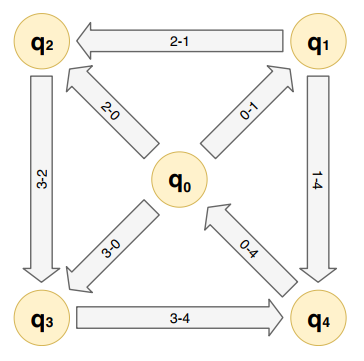 Circuit centric quantum architecture designUtkarsh Azad , Ankit Papneja , Rakesh Saini , Bikash K. Behera , and Prasanta K. PanigrahiIET Quantum Communication, Apr 2020
Circuit centric quantum architecture designUtkarsh Azad , Ankit Papneja , Rakesh Saini , Bikash K. Behera , and Prasanta K. PanigrahiIET Quantum Communication, Apr 2020With the development in the field of quantum physics, several methods for building a quantum computer have emerged. These differ in qubit technologies, interaction topologies, and noise characteristics. In this article, insights are given into the circuit-centric architecture design of Noisy Intermediate-Scale Quantum (NISQ) devices. The dependence of the circuit size, circuit depth on the interaction and connection between different qubits present in quantum hardware are discussed. A noise-aware procedure is presented which helps in determining the optimal interactions between different qubits of a quantum chip to execute a given circuit in the most efficient way possible. In this article, the 5-qubit hardware in a noiseless setting is illustrated with an example. Also, a benchmark-driven analysis is performed to show the importance of noise adaptivity in determining the hardware reliability. It is concluded that a generalized and flexible procedure such as this approach can aid in determining the design of hardware accurately for which the circuit runs efficiently, that is, with the least number of clock cycles, the lowest gate operations, and noise-based errors.
@article{CCQADAzad2021, title = {Circuit centric quantum architecture design}, author = {Azad, Utkarsh and Papneja, Ankit and Saini, Rakesh and Behera, Bikash K. and Panigrahi, Prasanta K.}, year = {2020}, journal = {{IET} Quantum Communication}, publisher = {Institution of Engineering and Technology ({IET})}, volume = {2}, number = {1}, pages = {14--25}, bibtex_show = true, doi = {10.1049/qtc2.12004}, }
2019
-
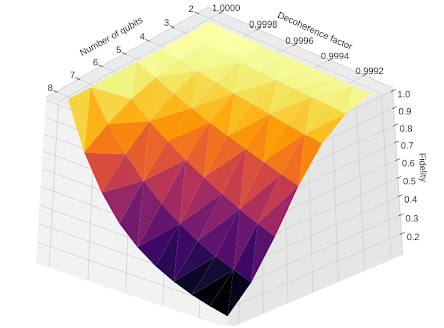 A software simulator for noisy quantum circuitsH. Chaudhary* , B. Mahato* , L. Priyadarshi* , N. Roshan* , U. Azad* , and A. D. PatelInternational Journal of Modern Physics C, Aug 2019
A software simulator for noisy quantum circuitsH. Chaudhary* , B. Mahato* , L. Priyadarshi* , N. Roshan* , U. Azad* , and A. D. PatelInternational Journal of Modern Physics C, Aug 2019We have developed a software library that simulates noisy quantum logic circuits. We represent quantum states by their density matrices in the Pauli basis, and incorporate possible errors in initialisation, logic gates, memory and measurement using simple models. Our quantum simulator is implemented as a new backend on IBM’s open-source Qiskit platform. In this document, we provide its description, and illustrate it with some simple examples.
@article{Chaudhary2022, title = {A software simulator for noisy quantum circuits}, author = {Chaudhary*, H. and Mahato*, B. and Priyadarshi*, L. and Roshan*, N. and Azad*, U. and Patel, A. D.}, year = {2019}, month = aug, journal = {International Journal of Modern Physics C}, publisher = {World Scientific Pub Co Pte Ltd}, volume = {33}, number = {08}, bibtex_show = true, doi = {10.1142/s0129183122501030}, }
2018
-
 PennyLane: Automatic differentiation of hybrid quantum-classical computationsVille Bergholm , Josh Izaac , Maria Schuld , Christian Gogolin , Shahnawaz Ahmed , Utkarsh Azad , and 62 more authorsAug 2018
PennyLane: Automatic differentiation of hybrid quantum-classical computationsVille Bergholm , Josh Izaac , Maria Schuld , Christian Gogolin , Shahnawaz Ahmed , Utkarsh Azad , and 62 more authorsAug 2018PennyLane is a Python 3 software framework for differentiable programming of quantum computers. The library provides a unified architecture for near-term quantum computing devices, supporting both qubit and continuous-variable paradigms. PennyLane’s core feature is the ability to compute gradients of variational quantum circuits in a way that is compatible with classical techniques such as backpropagation. PennyLane thus extends the automatic differentiation algorithms common in optimization and machine learning to include quantum and hybrid computations. A plugin system makes the framework compatible with any gate-based quantum simulator or hardware. We provide plugins for hardware providers including the Xanadu Cloud, Amazon Braket, and IBM Quantum, allowing PennyLane optimizations to be run on publicly accessible quantum devices. On the classical front, PennyLane interfaces with accelerated machine learning libraries such as TensorFlow, PyTorch, JAX, and Autograd. PennyLane can be used for the optimization of variational quantum eigensolvers, quantum approximate optimization, quantum machine learning models, and many other applications.
@article{pennylane2018, title = {PennyLane: Automatic differentiation of hybrid quantum-classical computations}, author = {Bergholm, Ville and Izaac, Josh and Schuld, Maria and Gogolin, Christian and Ahmed, Shahnawaz and Azad, Utkarsh and Ajith, Vishnu and Alam, M. Sohaib and Alonso-Linaje, Guillermo and AkashNarayanan, B. and Asadi, Ali and Arrazola, Juan Miguel and Banning, Sam and Blank, Carsten and Bromley, Thomas R and Cordier, Benjamin A. and Ceroni, Jack and Delgado, Alain and Di Matteo, Olivia and Dusko, Amintor and Garg, Tanya and Guala, Diego and Hayes, Anthony and Hill, Ryan and Ijaz, Aroosa and Isacsson, Theodor and Ittah, David and Jahangiri, Soran and Jain, Prateek and Jiang, Edward and Khandelwal, Ankit and Kottmann, Korbinian and Lang, Robert A. and Lee, Christina and Loke, Thomas and Lowe, Angus and McKiernan, Keri and Meyer, Johannes Jakob and Montañez-Barrera, J. A. and Moyard, Romain and Niu, Zeyue and O'Riordan, Lee James and Oud, Steven and Panigrahi, Ashish and Park, Chae-Yeun and Polatajko, Daniel and Quesada, Nicolás and Roberts, Chase and Sá, Nahum and Schoch, Isidor and Shi, Borun and Shu, Shuli and Sim, Sukin and Singh, Arshpreet and Strandberg, Ingrid and Soni, Jay and Száva, Antal and Thabet, Slimane and Vargas-Hernández, Rodrigo A. and Vincent, Trevor and Vitucci, Nicola and Weber, Maurice and Wierichs, David and Wiersema, Roeland and Willmann, Moritz and Wong, Vincent and Zhang, Shaoming and Killoran, Nathan}, year = {2018}, publisher = {arXiv}, doi = {10.48550/ARXIV.1811.04968}, copyright = {arXiv.org perpetual, non-exclusive license}, image = {pl_logo.png}, bibtex_show = true, keywords = {Quantum Physics (quant-ph), Emerging Technologies (cs.ET), Machine Learning (cs.LG), Computational Physics (physics.comp-ph), FOS: Physical sciences, FOS: Physical sciences, FOS: Computer and information sciences, FOS: Computer and information sciences} }